#cephalopodawarenessdays
Text
Happy World Octopus Day!
This cephalopod cutie, Opisthoteuthis sp., is a cirrate octopus. A small pair of fins on their mantle and webbed arms allow them to either drift or pulse like a jellyfish just above the seafloor. Scientists believe the finger-like cirri lining each arm are used to detect and capture small prey such as crustaceans, polychaetes, and mollusks living in the mud.

Many cephalopods die shortly after they spawn, but Opisthoteuthis is able to continuously spawn throughout their lifetime. Their eggs require up to three years to develop and hatch. Given the length of time for egg development, we believe these species may be relatively long-lived, but little is known about their natural history. Learn more about this charismatic cephalopod on our website.
272 notes
·
View notes
Text

What better way to celebrate Squid/Cuttlefish Day than with a stubby squid?
In 2016, we teamed up with Nautilus Live to explore the deep ocean in and around Channel Islands National Marine Sanctuary, and spotted this little googly-eyed cephalopod!
Though they look like a cross between an octopus and a squid, stubby squid are actually closely related to cuttlefish. They spend their lives on the seafloor, coating themselves in a mucus jacket and burrowing into the sediment. Leaving just those big eyes peeking above the surface, they remain buried until prey items like shrimp or small fish - or a curious ROV - pass by.
(Photo: OET/NOAA. Image description: A bright purple stubby squid with large eyes on the seafloor.)
#EarthIsBlue#SquidCuttlefishDay#Cephalopods#Octopus#OCTOber#Squid#Mollusk#Cuttlefish#Nautilus#Invertebrates#CephalopodAwarenessDays#DeepSea
268 notes
·
View notes
Photo
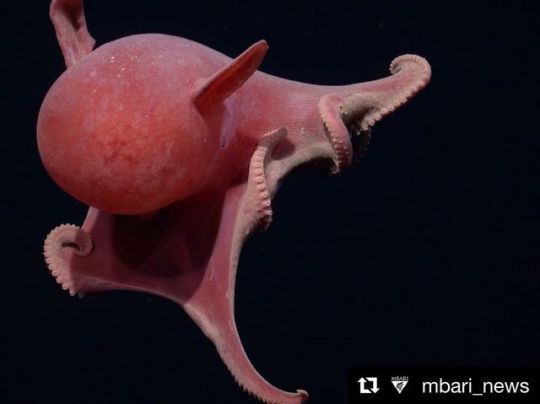
#Repost @mbari_news ・・・ Happy International Octopus Day! 🐙 These incredible animals certainly deserve some celebration! This Grimpoteuthis sp., (aka "Dumbo octopus) was spotted gliding gracefully through the dark water at 3,325 meters (10,908 feet). This group of octopuses is typically found on or near the seafloor where they use finger-like cirri on their arms to catch small crustacean, worms, and other prey items. We'll be showcasing more of our fantastic cephalo-friends this week as we celebrate Cephalopod Awareness Days, so stay tuned for all the cephalomania! #MBARI #deepsea #ocean #internationaloctopusday #WoldOctopusDay #OctopusDay #cephalopodawarenessdays #cephalomania #underwaterphotography #nature #explore #science #exploremore #wildlife #MontereyBay https://www.instagram.com/p/B3XR_x1hz-j/?igshid=tqtuqtkthlg2
#repost#mbari#deepsea#ocean#internationaloctopusday#woldoctopusday#octopusday#cephalopodawarenessdays#cephalomania#underwaterphotography#nature#explore#science#exploremore#wildlife#montereybay
1 note
·
View note
Photo
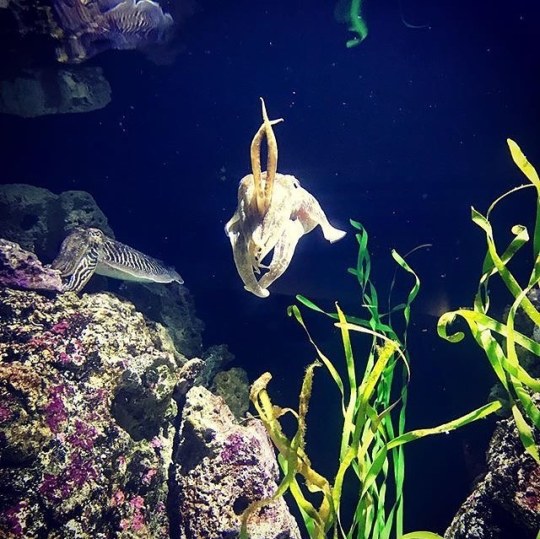
Raise your arms if you're a fan of #cuttlefish! These octopus kin have eight arms, each lined with suckers. They also have two grasping tentacles that can dart out to snatch a quick-moving snack. 📷: @daniijx3 via Instagram
114 notes
·
View notes
Photo
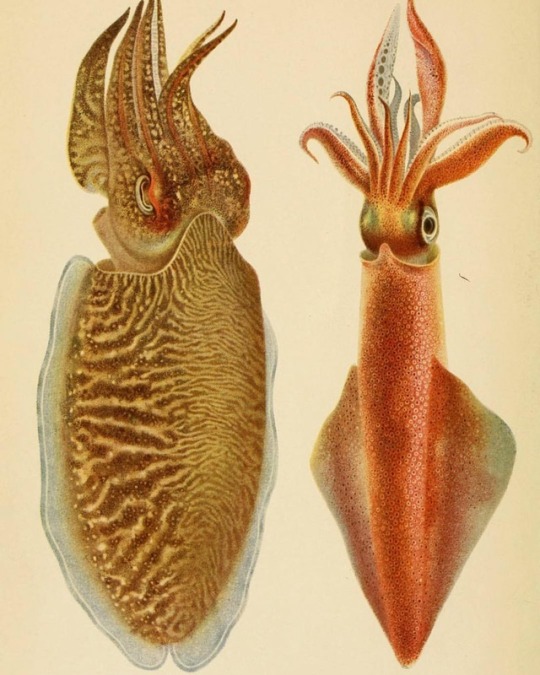
Common cuttlefish (Sepia officinalis) and European squid (Loligo vulgaris) for #CephalopodAwarenessDays! #Cuttlefish have excellent camouflage. They can change their coloring rapidly to match their environment. European #Squid live from sea level to depths of 500 m. They migrate to inshore waters to spawn, where females can lay up to 20,000 eggs. #SciArt from Tintenfische; mit besonderer Berücksichtigung von Sepia und Octopus (1913) by Werner Meyer. Contributed for digitization by Smithsonian Libraries (@silibraries) to #BiodiversityHeritageLibrary. https://www.biodiversitylibrary.org/page/12668599 _________________________________________________ #Cephalopods #MarineLife #Oceans #Seas #BHLib #Biodiversity #NaturalHistory #NatHist #ScientificIllustration #ScientificArt #OpenAccess #Libraries #Archives #SpecialCollections #LibrariesofInstagram #IGLibraries #IG_Libraries #SmithsonianLibraries
#cephalopodawarenessdays#nathist#bhlib#scientificart#biodiversityheritagelibrary#naturalhistory#cuttlefish#libraries#marinelife#openaccess#archives#squid#oceans#scientificillustration#sciart#specialcollections#cephalopods#smithsonianlibraries#librariesofinstagram#biodiversity#iglibraries#seas#ig_libraries
76 notes
·
View notes
Photo
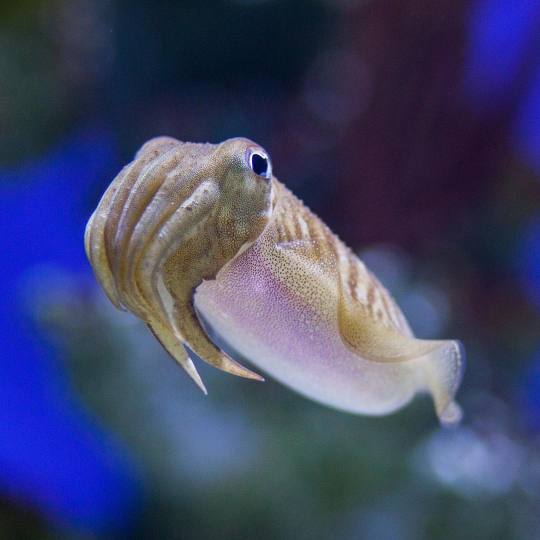
Cephalopod Awareness Days are coming to an end and were wrapping it up with the cuttlefish! These cephalopods are quite the communicators! With their skin, that is. They are able to convey alarming threats to predators or courtship messages to potential mates by flashing and pulsing their color-changing skin. #CephalopodAwarenessDays (at Georgia Aquarium)
12 notes
·
View notes
Photo
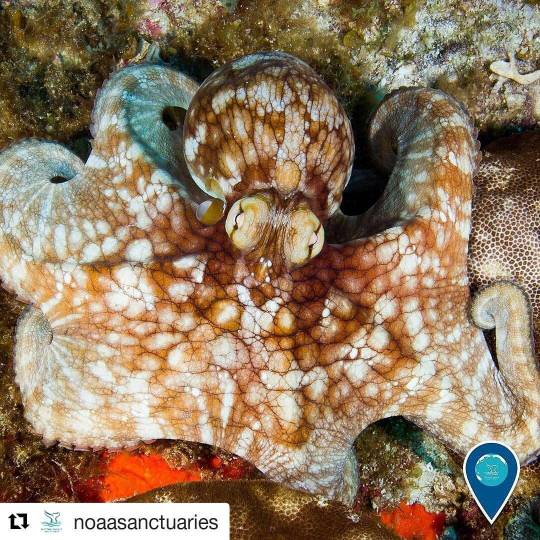
#Repost @noaasanctuaries ・・・ #Octopuses 🐙 are about 90% muscle, and about 100% fascinating. Found in many of our national marine sanctuaries, octopuses have a number of unique characteristics that make them well suited to life in the sea. In addition to their impeccable color-changing camouflage -- pictured here in this photo of an #octopus in #FlowerGardenBanks National Marine Sanctuary -- octopuses have a protein called hemocyanin in their blood. Hemocyanin acts much like our own hemoglobin, the protein that carries oxygen throughout human bloodstreams. But unlike human hemoglobin, which contains iron, hemocyanin is rich in copper and is more efficient than hemoglobin at very cold temperatures or in low-oxygen environments. Hemocyanin is also the compound that makes octopus blood blue. Celebrate #CephalopodAwarenessDays with us today and share YOUR favorite octopus facts! #EarthIsBlue #Cephalopod #Science #Biology #Facts #Ocean #GulfOfMexico (Image: Steve Miller)
#biology#octopuses#flowergardenbanks#cephalopodawarenessdays#science#gulfofmexico#ocean#facts#earthisblue#octopus#cephalopod#repost
3 notes
·
View notes
Text

Today begins Cephalopod Awareness Days (and it is Octopus Day)!
Cephalopods, a group of marine invertebrates with well-developed eyes and nervous systems, can be found throughout the national marine sanctuary system. These creatures include octopus, nautiluses, squids, and cuttlefish!
Learn more by visiting: https://sanctuaries.noaa.gov/news/oct20/cephalopod-days.html.
(Photo: James Watt/NOAA. Image Description: Close-up image of orange octopus with white stripes.)
#EarthIsBlue#Cephalopods#Octopus#OCTOber#Squid#Mollusk#Cuttlefish#Nautilus#Invertebrates#CephalopodAwarenessDays
161 notes
·
View notes
Text
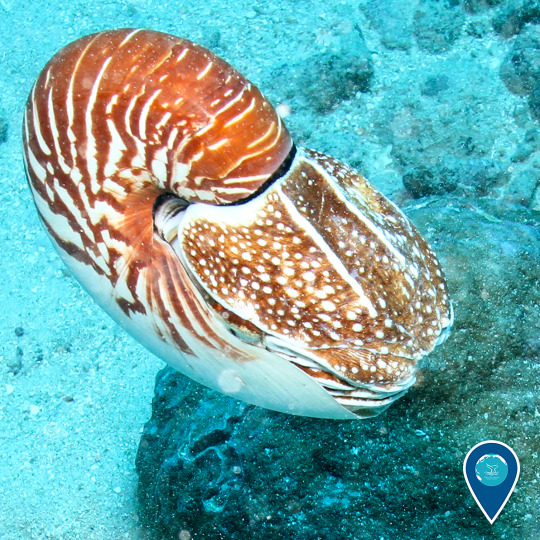
Meet the nautilus!
A distant cousin to squids, octopus, and cuttlefish, the soft-bodied nautilus lives inside its hard, chambered shell. It uses these chambers to pump water in and out of its shell, creating jet propulsion to thrust itself backwards and make turns.
(Photo: Michelle Johnston/NOAA. Image description: A nautilus with a bright orange and white shell floating.)
#EarthIsBlue#NautilusNight#Cephalopods#Octopus#OCTOber#Squid#Mollusk#Cuttlefish#Nautilus#Invertebrates#CephalopodAwarenessDays
152 notes
·
View notes
Photo



Happy International Octopus Day! 🐙
These incredible animals certainly deserve some celebration! This Grimpoteuthis sp., (aka "Dumbo octopus) was spotted gliding gracefully through the dark water at 3,325 meters (10,908 feet). This group of octopuses is typically found on or near the seafloor where they use finger-like cirri on their arms to catch small crustacean, worms, and other prey items. We'll be showcasing more of our fantastic cephalo-friends this week as we celebrate Cephalopod Awareness Days, so stay tuned for all the cephalomania!
217 notes
·
View notes
Photo

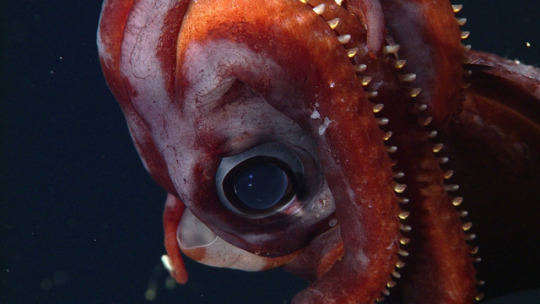
We’re looking at right you, Squid Day!
We're celebrating International Squid Day with the spectacular octopus squid, named Octopoteuthis deletron because it only has eight arms (like it's octopus relatives). This species of squid is amazing in so many different ways! Their tentacles are bioluminescent, with light-producing photophores at the end of each arm. They also have a fascinating way of protecting themselves when threatened by predators. Like a lizard that detaches its tail when attacked, these squid can detach their bioluminescent arm tips, leaving a wiggling arm with a flashing photophore in the grasp of their confused would-be predator. As far as we know, it is the only squid species to exhibit this unusual defensive behavior.
52 notes
·
View notes
Photo

It's #CephalopodAwarenessDays. The hashtag may be a mouthful, but the content is TOP NOTCH. Like most cephalopod species, giant Pacific #octopus have special skin cells called #chromatophores that allow them to change color to blend into their surroundings. 🌈 🐙 — view on Instagram https://ift.tt/33gswm6
65 notes
·
View notes